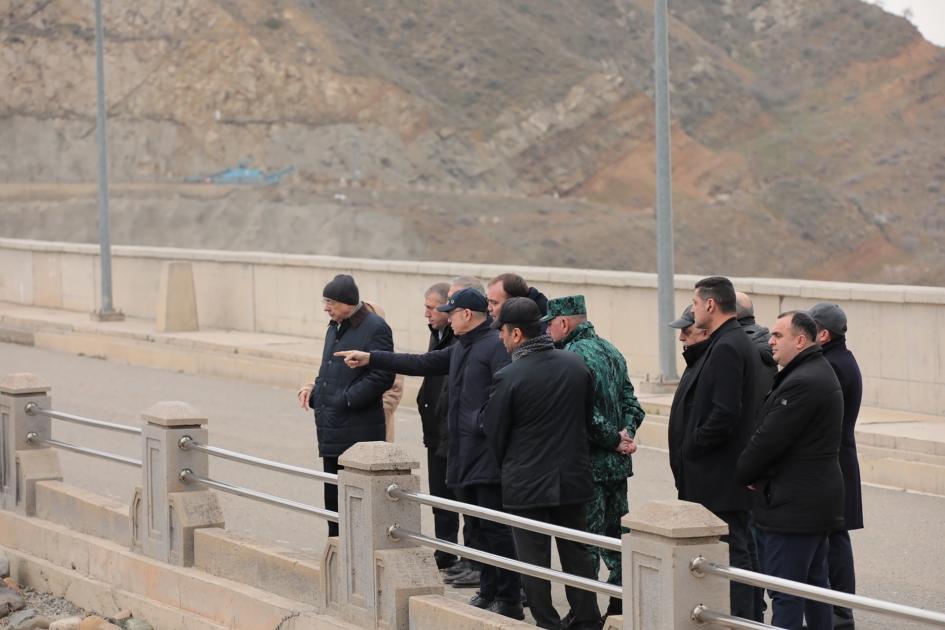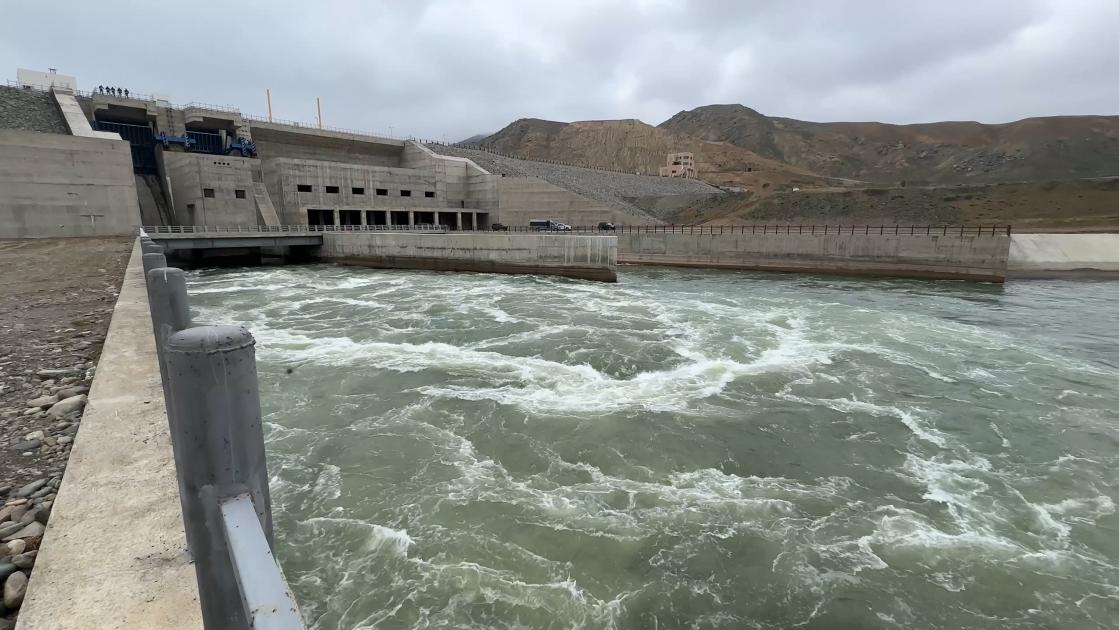Azerbaijan nears realisation of strategic hydropower facilities Review by Caliber.Az
Azerbaijan has begun to fully control its strategically important water resources in the Karabakh region after its victory in the second Karabakh war in 2020. In particular, the matter rests in the potential of the border Araz River. Over the past three years, the work has been carried out together with Iran to construct the water infrastructure of the Khudafarin reservoir and two hydropower facilities located there. Azerbaijani Energy Minister Parviz Shahbazov wrote in X that the construction of the Khudafarin and Giz Galasi hydro junctions is under completion. Shahbazov viewed the construction process of water facilities on site.
The idea of constructing the Khudafarin reservoir was discussed back in the 1960s. Iran and the Union of Soviet Socialist Republics (USSR) entered into an interstate agreement on the implementation of the project in 1977. However, the Islamic revolution in Iran and the subsequent war with Iraq delayed the work. The reservoir project was prepared in 1982. Despite the beginning of construction, the work was stopped due to the collapse of the USSR and the subsequent aggression of Armenia, which captured the southwestern Azerbaijani regions in 1993.
A landmark moment in the joint use of Araz water resources was the Azerbaijani-Iranian agreement signed in February 2016 “On cooperation between the Azerbaijani and Iranian governments in continuing the construction of Khudafarin and Giz Galasi hydroelectric complexes and hydroelectric stations on the Araz River, their operation and using of energy and water resources”. This document outlined Azerbaijan’s exclusive legal rights to implement the joint Iran-Azerbaijan cross-border project and proclaimed equal rights to water and energy resources.
Almost immediately after the liberation of the territories of the East Zangezur and Karabakh economic regions of Azerbaijan from the Armenian occupation, large-scale work began to develop the hydropotential of the Lesser Caucasus region, abundant in water resources. The reservoirs were restored and hydroelectric power stations were built, the capacity of which will soon exceed 500 MW.
In particular, the matter rests in the most powerful hydroelectric facilities in the region - Khudafarin and Giz Galasi. Over the past period, Baku and Tehran signed several documents defining mechanisms for managing water resources and the shared division of generated electricity, the conditions for joint investments in completing the construction of a reservoir on the bordering Araz River were outlined, and then joint work was launched to construct hydroelectric complexes and hydroelectric power stations.
“We visited the Khudafarin and Giz Galasi hydroelectric complexes, which are being built on the Araz River, viewed the ongoing work on the hydroelectric power stations being built here, and assessed the current situation. The construction of hydroelectric facilities has been completed by 96 per cent,” Azerbaijani Energy Minister Parviz Shahbazov, who has recently visited the Jabrayil district, wrote on X.

Earlier, the information went viral that all work on the Khudafarin reservoir and hydraulic facilities is planned to be completed in 2024. The total capacity of the two hydroelectric power stations located on the border with Iran is 280 MW, including Khudafarin - 200 MW, Giz Galasi - 80 MW. When they reach operating capacity, both power plants are expected to produce 716 million kW/h of electricity annually, of which 358 million kW/h on a 50/50 basis will account for Azerbaijan and the same volume for Iran. The biggest 330-kilovolt junction substation “Jabrayil” in the Karabakh region was put into operation in May 2023 to transfer electricity generated at the Khudafarin, Giz Galasi and Gunesh hydroelectric power stations to the country’s unified energy grid.
The construction of the Jabrayil hub substation already plays a special role in the energy supply to the territories liberated from occupation. By using this substation, electricity from hydroelectric power stations and other generators of renewable energy sources in Karabakh will be transferred to the Jabrayil-Nakhchivan-Agri transit route in the future. A more profitable route to European energy markets will be ensured through the Turkish energy system.
An equally important aspect of the joint use of the Khudafarin reservoir with a capacity of over 1.6 billion cubic metres with Iran will be the irrigation of 260,000 hectares of arable land in southwestern Azerbaijan. Work in this sphere has already begun. Hydraulic mechanisms are being restored, irrigation collectors and water canals are being cleared of silt in the Jabrayil district. Five pumping stations have also been commissioned thanks to which about 4,810 hectares of cultivated land in the district are irrigated.
About 20 per cent of the water resources which are being created in Azerbaijan account for the Karabakh region. In particular, the resources of a dozen rivers and about two and a half dozen medium and small reservoirs and natural lakes are planned to be used in the territories liberated from occupation. The Lesser Caucasus mountainous areas are the most promising ones. Its rivers and other water sources provide an annual flow of about 2.56 billion cubic metres.

In general, the efforts of the specialists of Azerenergy company, who have been working to revive the hydropotential of Karabakh for several years, deserve praise. Almost immediately after the end of the second Karabakh war, the work has been launched since January 2021 to restore four hydroelectric power plants with a total generating capacity of 20 MW in the Azerbaijani territories liberated from occupation. Then, a dozen more facilities were reconstructed and constructed in 2022–2023. According to Azerenergy company, 12 small hydroelectric power stations will be commissioned in the Karabakh region in 2024.
The work carried out over the past three years is especially noticeable given the huge damage caused by the Armenian occupiers to the water and energy infrastructure of the region. The separatists completely destroyed or rendered unusable more than two-thirds of three dozen small hydroelectric power stations and other water facilities in the region over the 30 years of occupation and during the second Karabakh war.








